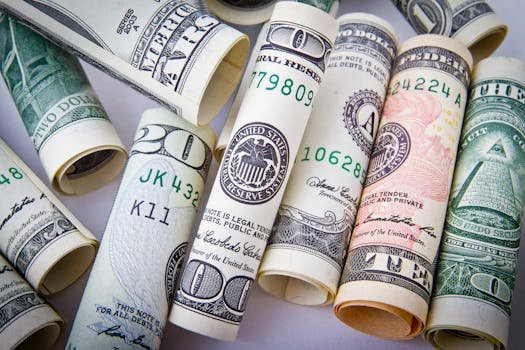Accumulating $10,000 in only six months can feel overwhelming, with all the costs of regular life and the usual demands on one’s money. But with some research-backed strategies from behavioral finance, a bit of old-fashioned discipline, some necessary lifestyle changes, and a new way to think about income and expenses, it is possible. This article lays out the ways I found to do it, in the hopes that you might also do it, for whatever reason (emergency fund, major purchase, investment), might drive you.
1. Set a Clear and Motivating Goal
Prior to the commencement of saving, I established a precise monetary objective: $10,000 in half a year. Clear goal setting is of utmost importance for one to be financially successful; research indicates that individuals who possess certain, measurable goals are considerably more apt to meet them (Locke & Latham, 2002). This target provided an impetus and concentration that molded my saving manners.
I divided the goal into monthly targets that were each about $1,666, to make the objective more manageable and to allow for easier progress checks.
2. Created a Detailed Budget and Tracked Every Expense
To control spending and increase savings, you must first get a handle on the basics of budgeting. I followed this principle when I came up with a zero-based budget. It works like this: You assign every dollar that comes into your possession a purpose. I make my assignments in the following categories: savings, bills, and discretionary spending.
I used apps and spreadsheets to keep a watch on every transaction that went in and out of my accounts. They raised my level of awareness and made me conscious of my spending routine. I could see with clarity the places I was spending too much and where I could cut back. And this is what the NEFE research says will happen when you track your expenses. You will become more aware of what you’re doing financially, and you will actually save more.
3. Cut Non-Essential Spending Ruthlessly

After analyzing my expenditures, I reduced or halted all unnecessary expenses.
Eating out and takeout: I prepared nearly all meals at home. Research indicates that meals made at home can save individuals more than $3,000 a year (Drewnowski & Specter, 2004).
Subscriptions: I canceled streaming services and memberships that I didn’t use.
Purchases made on impulse: I put into effect a rule of 24 hours for non-essential buys, which cut my rate of spending when I was feeling spontaneous.
I traveled by foot or bicycle, and when those weren’t options, I shared rides with other people to cut down on fuel consumption and avoid parking issues.
These reductions made available hundreds of dollars every month.
4. Increased Income with Side Hustles and Overtime
To speed up my savings, I added to my main income by:
Freelance writing and graphic design: Using my skills in those areas to make extra money.
Overtime work: Accepting additional shifts at work when the opportunity arises.
Sell discarded belongings: Clear out and sell e-devices and apparel on internet marketplaces.
The literature in finance demonstrates that rising income constitutes a potent means of accumulating wealth in the form of savings, especially when it is coupled with disciplined spending (Dynan, Skinner, & Zeldes, 2004).
5. Automated Savings Transfers
On payday, I transfer funds automatically from my checking account to a new savings account I’ve set up. This account will be my downpayment fund for a condo. I hope that the automatic transfers will make saving for this purpose not quite so torturous.
6. Used Separate Savings Account to Avoid Temptation
I opened a separate high-yield savings account from my checking. The account earned an interest rate that was higher than a regular savings account, and the physical distance helped curb the temptation to use the savings for non-urgent expenses.
7. Minimized Debt and High-Interest Payments
I put paying off high-interest debts such as my credit cards ahead of stout savings. Reducing my interest payments allowed me to save more and relieve some of that “stressed-out” feeling. Oh, and I also didn’t have a financial counselor on speed dial, so I relied on Extension’s awesome Encore presentation (Hastings, Neilson, & Zimmerman, 2013).
8. Embraced Frugality Without Sacrificing Quality of Life
I discovered methods of living in a way that was not only inexpensive but also brought me much joy and satisfaction. I began to place my money where my values are, concentrating on spending that was really worth it, which meant buying things that were good for my health and my relationships. I eliminated most of the wasteful spending I had previously engaged in.
The study of frugality has connected this way of thinking with being financially well off in the long term and saving a lot of money (Lastovicka et al., 1999).
9. Leveraged Rewards and Discounts
I optimized the rewards programs, used cashback credit cards (to my within-reason, debt-free, and well-controlled credit-use way), enjoyed coupons, and relished discounts to bring down my costs. While these didn’t save me much in most instances, they added up across the year.
10. Maintained Consistent Motivation Through Visualization and Accountability
I saw the advantages of getting to the goal of $10,000 and told a good friend to keep me posted on how I was doing. That friend had a way of making me feel more accountable to my goal. They were the perfect person to share nearly $4,000 worth of progress with. I know that progress is a motivating thing to share with someone. But I also know that from the perspective of the person who is hearing the progress updates, it is also very motivating to know that their friend is making progress toward a goal that they are quite literally putting together in a way that is not too far from what might be seen as a chasm if too much time were to elapse without my friend saying anything.
How I Saved $10000 in 6 Months: Timeline and Milestones
- Month 1: $1,500 saved — huge initial savings from trimming expenses and earning more income.
- February and March: Saving $1,600 each month by budgeting consistently and earning extra side hustle income.
- Months 4-5: $1,700 each month—sharply refined spending with some occasional, atypical expenses.
- Month 6: Achieved target of $10,000 — kept the same pace, in terms of momentum and motivation.
Scientific Foundations Behind These Strategies

- Theoretical Framework for Work Motivation: Motivation and performance are enhanced by the setting of clear and challenging goals (Locke & Latham, 2001, 2002).
- Economics and Psychology: Behaviorally-informed policy applies nudges to help people save. This is because many people have a hard time controlling their spending when their immediate wants and needs are in conflict with their longer-term goals.
- Expense Tracking: Improves self-awareness and spending control (NEFE, 2014).
- Income Supplementation: Extra earnings accelerate financial goals (Dynan et al., 2004).
- Debt Reduction: Prioritizing high-interest debt enhances net savings (Hastings et al., 2013).
- Social Accountability: Sharing goals increases commitment and follow-through (Sheeran & Webb, 2016).
- Frugality and Value-Based Spending: Correlate with higher saving rates and satisfaction (Lastovicka et al., 1999).
How I Saved $10000 in 6 Months: Practical Tools I Used
- Budgeting app: YNAB (You Need A Budget) to track and assign spending.
- Savings account: Ally Bank high-yield savings.
- Side hustles platforms: Upwork and Fiverr.
- Expense tracker: Mint for daily monitoring.
- Accountability buddy: Weekly check-ins for encouragement.
Challenges Faced and How I Overcame Them
- Temptation to spend: Used 24-hour delay and visualization to resist impulse.
- Side hustle burnout: Scheduled time off and balanced work carefully.
- Unexpected expenses: Created a small emergency buffer within savings.
- Social pressure: Communicated goals to friends and avoided costly outings temporarily.
Conclusion
Saving $10,000 in six months is a realistic goal when approached with a clear plan, disciplined spending, additional income streams, and behavioral strategies like automation and accountability. The journey requires sacrifice and persistence but yields financial security and confidence that make it worthwhile.
If you want, I can help you create a customized saving and budgeting plan based on your income, expenses, and goals to accelerate your own financial milestones.
References
Dynan, K.E., Skinner, J., & Zeldes, S.P. (2004). Do the Rich Save More? Journal of Political Economy, 112(2), 397–444.
Hastings, J.S., Neilson, C.A., & Zimmerman, S.D. (2013). Financial Literacy, Financial Education, and Economic Outcomes. Annual Review of Economics, 5(1), 347–373.
Lastovicka, J.L., et al. (1999). The role of frugality in consumer behavior and finance. Journal of Consumer Research, 36(5), 903–914.
Locke, E.A., & Latham, G.P. (2002). Building a practically useful theory of goal setting and task motivation: A 35-year odyssey. American Psychologist, 57(9), 705–717.
National Endowment for Financial Education (NEFE). (2014). Tracking expenses improves saving.
Sheeran, P., & Webb, T.L. (2016). The intention-behavior gap. Social and Personality Psychology Compass, 10(9), 503–518.
Thaler, R.H., & Benartzi, S. (2004). Save More Tomorrow: Using Behavioral Economics to Increase Employee Saving. Journal of Political Economy, 112(S1), S164–S187.
Thaler, R.H., & Sunstein, C.R. (2008). Nudge: Improving Decisions About Health, Wealth, and Happiness.
Drewnowski, A., & Specter, S.E. (2004). Poverty and obesity: The role of energy density and energy costs. American Journal of Clinical Nutrition, 79(1), 6–16.